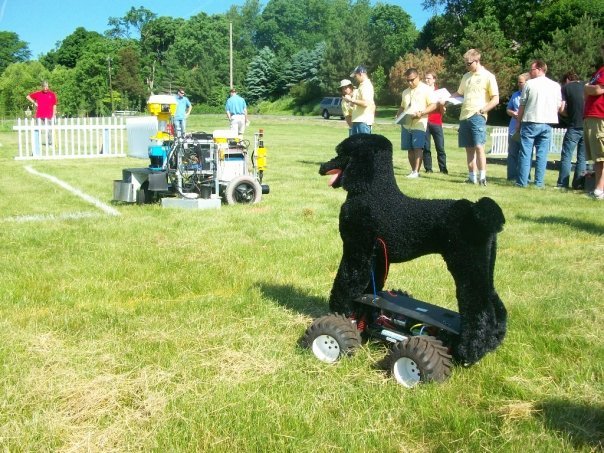
Navigation and Sensory Applications for an
Autonomous Lawnmower Design
2009 undergraduate design project,
Wright State University
About the Project
The Clean Cut autonomous lawnmower designed by students at Wright State University employs a variety of navigational and sensory capabilities within a system that is intelligent and robust to unexpected scenarios encountered during mowing. The mower is designed to compete in the 6th-annual Institute of Navigation (ION) Autonomous Lawnmower Competition. It is designed to complete mowing of an irregularly-shaped lawn course, while appropriately reacting to a variety of stationary and moving obstacles. The abilities of the mower to cut grass of unknown thickness, track its own location throughout the course, avoid prohibited areas, detect oncoming obstacles, and trim closely around stationary obstacles are necessary in order for this lawnmower design to meet the needs of the competition.
A differential global positioning system (GPS) is implemented in order to provide data for reliable navigation. A laser rangefinder and array of ultrasonic sensors are used to see imminent obstacles, and a series of force-sensing bumpers is used to feel around stationary obstacles during close-range trimming. These components, along with a complex navigational algorithm and durable mechanical systems, collectively form a robotic lawnmower capable of handling a variety of known and unknown conditions in mowing a lawn. The development of an intelligent lawnmower requires not only the careful design of each of these components, but also a seamless integration of these subsystems into a unified machine that is greater than the sum of its parts.
